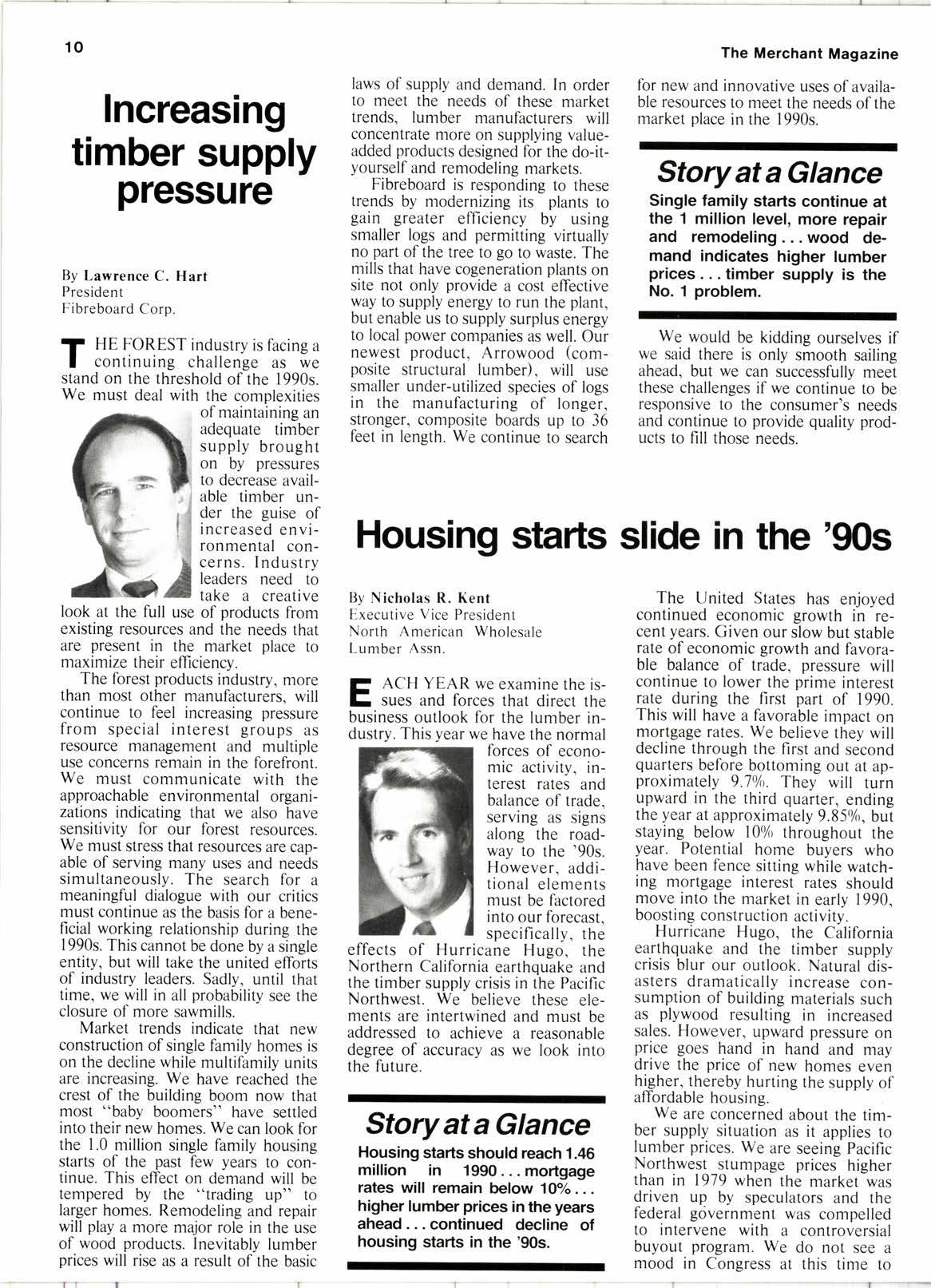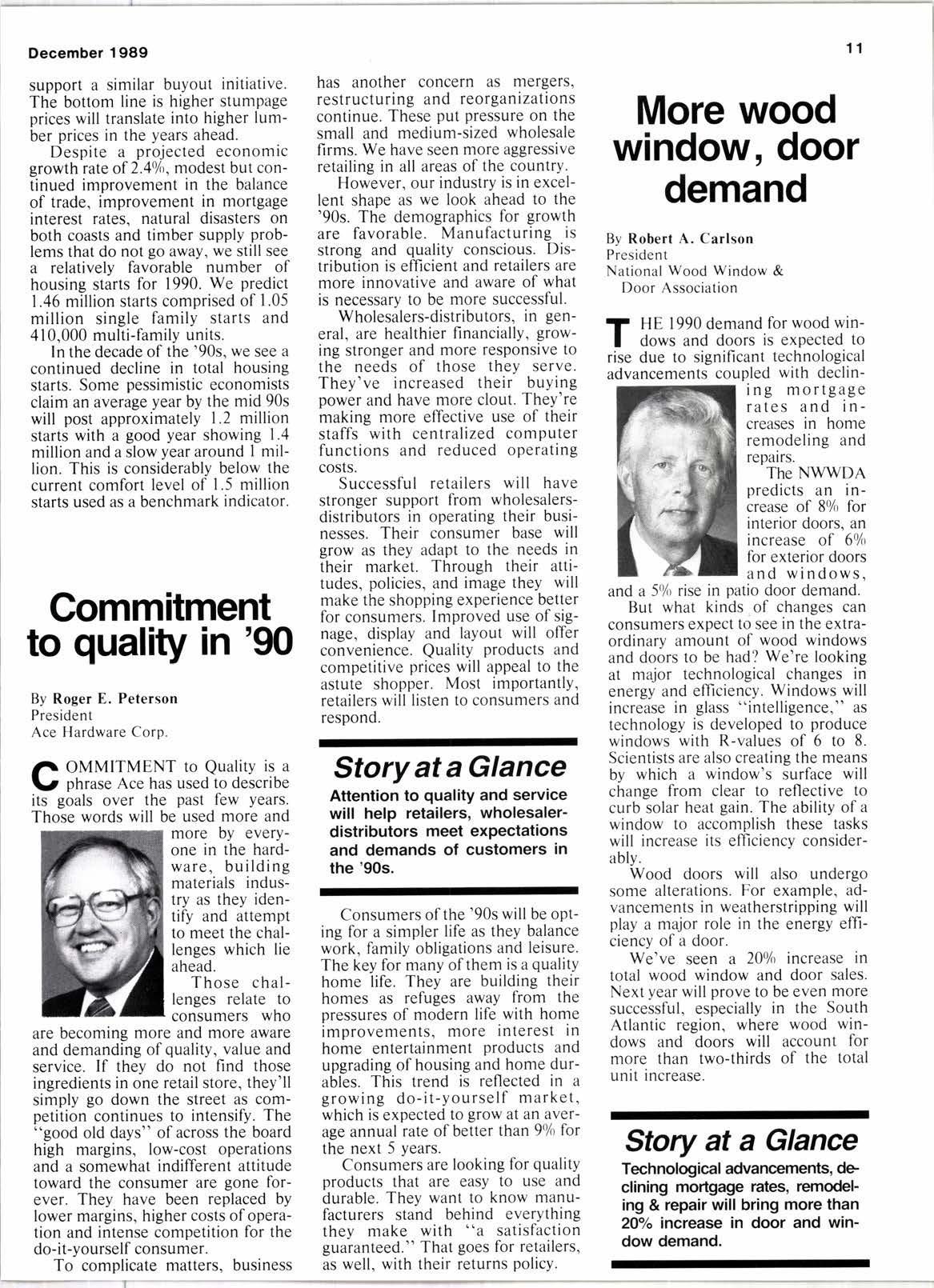
2 minute read
Housing starts slide in the '90s
By Nicholas R. Kent Executive Vice President North American Wholesale Lumber Assn.
ACH YEAR we examine the issues and forces that direct the business outlook for the lumber industry. This year we have the normal forces of economic activity, interest rates and balance of trade, serving as signs along the roadway to the '90s. However, additional elements must be factored into our forecast. specifically, the effects of Hurricane Hugo, the Northern California earthquake and the timber supply crisis in the Pacific Northwest. We believe these elements are intertwined and must be addressed to achieve a reasonable degree of accuracy as we look into the future.
Story at a Glance
Housing starts should reach 1.46 million in 1990... mortgage rates will remain below 1O"/" . -. higher lumber prices in the years ahead... continued decline of housing stafts in the'90s.
The United States has enjoyed continued economic growth in recent years. Given our slow but stable rate of economic growth and favorable balance of trade, pressure will continue to lower the prime interest rate during the first part of 1990. This will have a favorable impact on mortgage rates. We believe they will decline through the first and second quarters before bottoming out at ap- proximately 9.70/0. They will turn upward in the third quarter, ending the year at approximately 9.85%, but staying below 100/o throughout the year. Potential home buyers who have been fence sitting while watching mortgage interest rates should move into the market in earlv 1990. boosting construction activity.
Hurricane Hugo, the California earthquake and the timber supply crisis blur our outlook. Natural disasters dramatically increase consumption of building materials such as plywood resulting in increased sales. However, upward pressure on price goes hand in hand and may drive the price of new homes even higher, thereby hurting the supply of atlordable housins.
We are conceried about the timber supply situation as it applies to lumber prices. We are seeing Pacific Northwest stumpage prices higher than in 1979 when the market was driven upby speculators and the federal gcivernment was compelled to intervene with a controversial buyout program. We do not see a mood in Congress at this time to
December 1989 support a similar buyout initiative. The bottom line is higher stumpage prices will translate into higher lumber prices in the years ahead.

Despite a projected economic growth rate of 2.40/0, modest but continued improvement in the balance of trade, improvement in mortgage interest rates, natural disasters on both coasts and timber supply problems that do not go away, we still see a relatively favorable number of housing starts for 1990. We predict L46 million starts comprised of 1.05 million single family starts and 410,000 multi-family units.
In the decade of the '90s, we see a continued decline in total housing starts. Some pessimistic economists claim an average year by the mid 90s will post approximately 1.2 million starts with a good year showing 1.4 million and a slow year around 1 million. This is considerably below the current comfiort level of 1.5 million starts used as a benchmark indicator.










